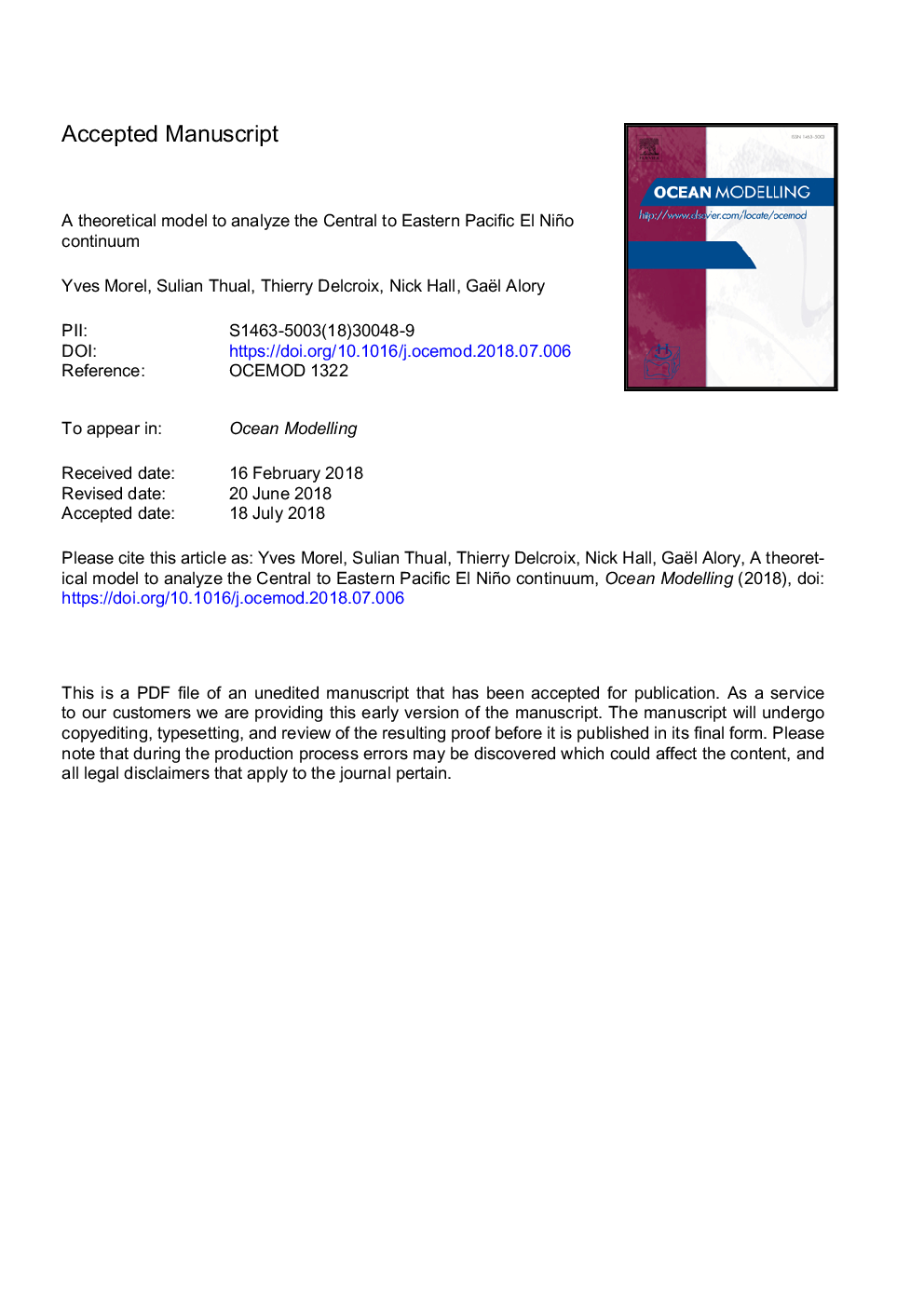| Article ID | Journal | Published Year | Pages | File Type |
|---|---|---|---|---|
| 11031738 | Ocean Modelling | 2018 | 66 Pages |
Abstract
A current scientific issue of great interest is to understand the mechanisms leading to the localization of El Niño events either in the Central (CP) or Eastern Pacific (EP). For this, we derive a reduced gravity mixed layer model for the equatorial ocean with simple nonlinearities, diabatic effects and zonally varying background characteristics. Using the model, we study the propagation of an equatorial Kelvin wave from an initial perturbation. An approximate analytical solution is found for the evolution of the maximum density (or temperature) anomaly created during the passage of the wave. Density anomalies can either peak in the CP or continuously increase until reaching the EP, which is representative of both types of El Niño. Sensitivity tests reveal that both the zonally varying background stratification and diabatic effects are important to determine the density pattern. The EP pattern is obtained for smooth background variations while the CP pattern requires a frontal background structure. Using numerical experiments, we then show how consecutive Kelvin waves can lead to the transition from a CP to an EP pattern. The present theoretical results provide useful insights for understanding El Niño dynamics and diversity in more complete models and observations.
Keywords
Related Topics
Physical Sciences and Engineering
Earth and Planetary Sciences
Atmospheric Science
Authors
Yves Morel, Sulian Thual, Thierry Delcroix, Nick Hall, Gaël Alory,
